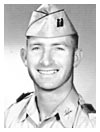In a recent study published by Steven P. Cohen, associate professor of anesthesiology and critical care medicine at Johns Hopkins University and a colonel in the U.S. Army Reserve, he states that “War amplifies all stressors, which may be why headaches take such a great toll in soldiers overseas.”
“Everyone who goes on patrol wears a Kevlar helmet,” Cohen says. “They are heavy. They are hard to wear. But if you get a headache from your helmet, you still must wear it. If you can’t tolerate your helmet, you can’t do your job. It would be too dangerous. So these folks end up being evacuated and not returning to duty.” Better helmet design could reduce strain on the occipital nerve and prevent at least one common type of headache, he says.
The military helmet study may be downloaded from the Cephalaghia, which is the Journal of the International Headache Society. The study was funded by the John P. Murtha Neuroscience and Pain Institute, the U.S. Army and the Army Regional Anesthesia and Pain Medicine Initiative.
The John Hopkins study headed up Stephen Cohen underscores the tact that our standard-issue military helmet appears to be poorly designed for the mission. While the military seems to be aware that poorly designed helmets are cause for concern as evidenced by the fact that sensors have been embedded in helmets for close to four years and there is considerable research on new helmet designs, our troops remain vulnerable.
Nevertheless, the development cycle and deployment of a more effective helmet seems rather slow considering the near epidemic number of combat veterans suffering from PTSD. As recently as five months ago, we reported studies that adding an 1/8″ to 1/4″ in padding could reduce brain injuries by 24%. Shouldn’t we be moving quickly to upgrade the protective gear of our soldiers in harm’s way as we look for a more comprehensive long term solution?
I realize that it is far easier for our Congressional leaders and military leaders to cross swords over the need for expensive weapon’s systems, but shouldn’t our first priority be for the young men and women serving on the front lines?


 Stand For The Troops (“SFTT”) is a 501(c)(3) non-profit Educational Foundation established by the late Col. David H. Hackworth and his wife Eilhys England to insure that our frontline troops have the best available leadership, equipment and training.
Stand For The Troops (“SFTT”) is a 501(c)(3) non-profit Educational Foundation established by the late Col. David H. Hackworth and his wife Eilhys England to insure that our frontline troops have the best available leadership, equipment and training. Includes rare footage from Hack's memorial service at Fort Myers Chapel and burial in Arlington National Cemetery.
Includes rare footage from Hack's memorial service at Fort Myers Chapel and burial in Arlington National Cemetery.